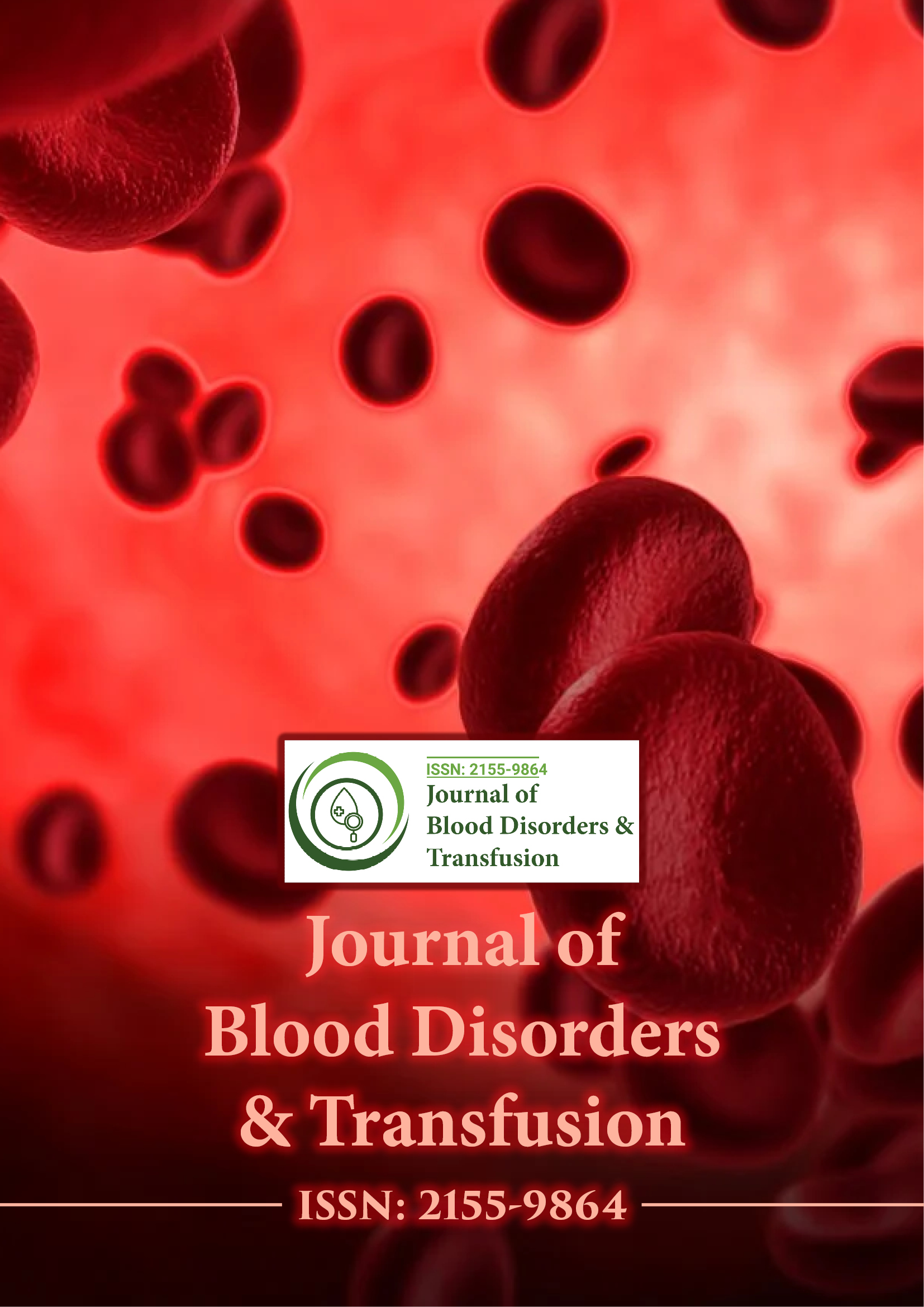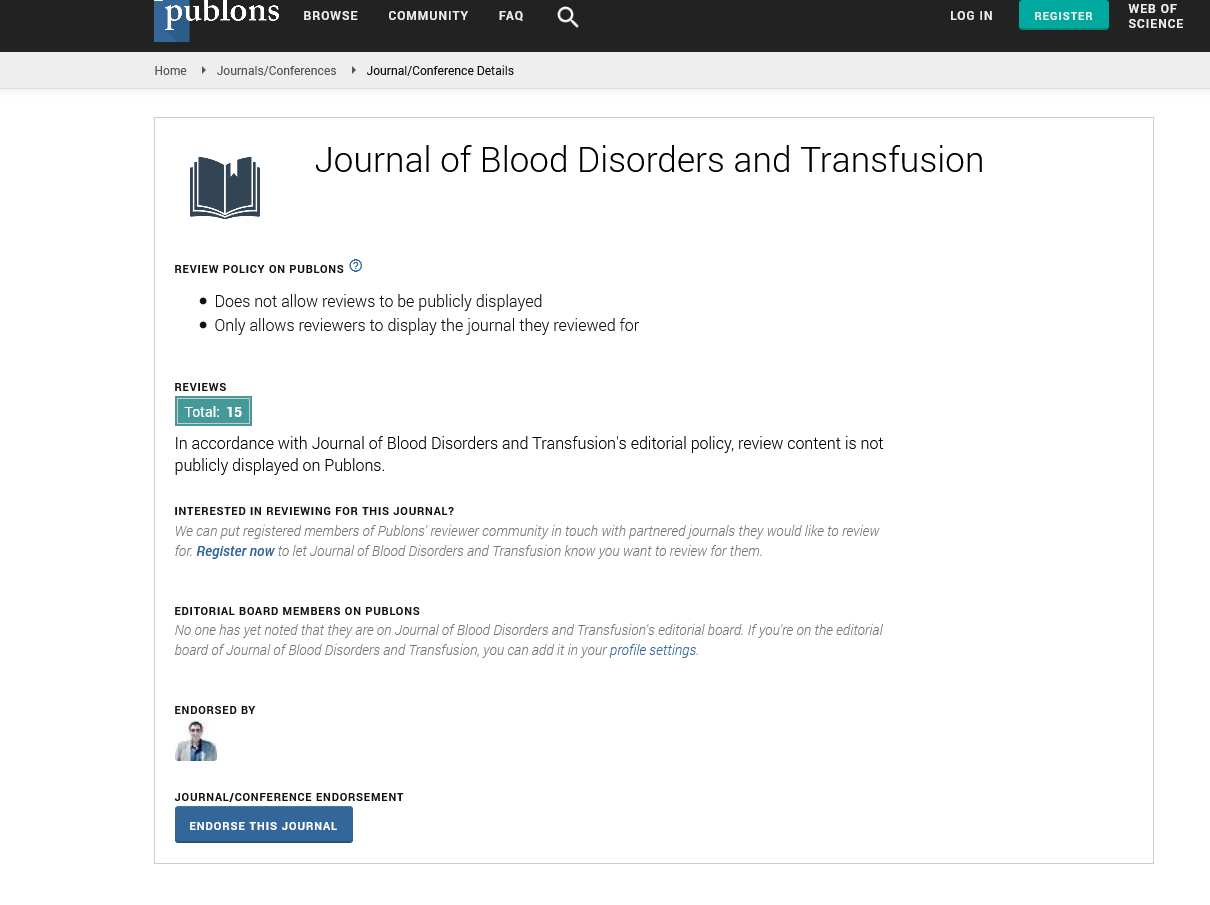PMC/PubMed Indexed Articles
Indexed In
- Open J Gate
- Genamics JournalSeek
- JournalTOCs
- Ulrich's Periodicals Directory
- RefSeek
- Hamdard University
- EBSCO A-Z
- OCLC- WorldCat
- Proquest Summons
- Publons
- Geneva Foundation for Medical Education and Research
- Euro Pub
- Google Scholar
Useful Links
Share This Page
Journal Flyer

Open Access Journals
- Agri and Aquaculture
- Biochemistry
- Bioinformatics & Systems Biology
- Business & Management
- Chemistry
- Clinical Sciences
- Engineering
- Food & Nutrition
- General Science
- Genetics & Molecular Biology
- Immunology & Microbiology
- Medical Sciences
- Neuroscience & Psychology
- Nursing & Health Care
- Pharmaceutical Sciences
Perspective - (2022) Volume 13, Issue 2
Short Note on Multiple Myeloma
Mlak Spath*Received: 07-Feb-2022, Manuscript No. JBDT-22-15400; Editor assigned: 09-Feb-2022, Pre QC No. JBDT-22-15400 (PQ); Reviewed: 21-Feb-2022, QC No. JBDT-22-15400; Revised: 25-Feb-2022, Manuscript No. JBDT-22-15400 (R); Published: 28-Feb-2022, DOI: 10.4172/2155-9864.22.13.315
Description
Multiple myeloma, also known as Kahler's disease, is a type of blood cancer. There is no cure, but treatment may slow the spread and eliminate symptoms. A type of white blood cell called a plasma cell produces antibodies that fight infections in the body. In multiple myeloma, these cells grow in the wrong direction. There is too much protein (called immunoglobulin) in the bones and blood. It accumulates throughout the body and damages your organs. Plasma cells cluster normal blood cells in your bones. They also send out chemicals that cause other cells to eat your bones. The weak areas that this creates in your bones are called soluble lesions. When multiple myeloma worsens, plasma cells leak out of the bone marrow and spread. This causes more organ damage.
Multiple myeloma is a cancer that begins with a type of white blood cell called plasma cells. Healthy plasma cells help fight infection by making antibodies that recognize and attack germ cells. In multiple myeloma, cancerous plasma cells accumulate in the bone marrow and swarm healthy blood cells. Instead of making useful antibodies, cancer cells make abnormal proteins that can cause complications. Treatment for multiple myeloma is not always immediately necessary. If multiple myeloma grows slowly and does not cause signs or symptoms, doctors may recommend close monitoring rather than immediate treatment. For people with multiple myeloma who need treatment, there are many options available to help control the disease. Multiple myeloma is one of many diseases that can cause problems with plasma cells. Others are as follows:
Monoclonal gammopathy
This happens when plasma cells make too many copies of the antibody. Multiple myeloma is a form of the disease. Another form, monoclonal gammopathy of undetermined significance, may increase the likelihood of developing multiple myeloma.
Solitary plasmacytoma
It is like multiple myeloma, but it causes the growth of a single abnormal plasma cell, rather than many of them. It can occur inside or outside the bone. It may also increase the risk of multiple myeloma.
Light chain amyloidosis
This causes abnormal plasma cells in the bone marrow, but the number of plasma cells is lower than in multiple myeloma.
Waldenstrom macroglobulinemia
It is a type of monoclonal gammopathy and is also a non- Hodgkin's lymphoma, a cancer of the lymphatic system. The cells of this cancer have the characteristics of both plasma cells and lymphoid tissue.
Symptoms
The signs and symptoms of multiple myeloma vary. If signs or symptoms occur, they include especially in your spine or chest, nausea, constipation, loss of appetite, mental drowsiness and confusion, malaise, frequent infections, weight loss, weakness and numbness in the legs.
Multiple myeloma Complications
Multiple myeloma can cause problems including:
• Bone problems: Your bones can become weaker, leading to fractures.
• Blood problems: You might get anemia, which means your body don’t have enough red blood cells. This can make you tired and pale and cause heart problems. You might also have too few platelets, which makes it harder for your blood to clot.
• Infections: When you have myeloma, your body produces a lot of weak antibodies that crowd out healthy ones, making it harder for you to fight infection. A lack of white blood cells can also weaken your immune system.
• Kidney damage: Myeloma can clog your kidneys so they don't filter the way they should. This might lead to kidney failure.
Citation: Spath M (2022) Short Note on Multiple Myeloma. J Blood Disord Transfus. 13:e315.
Copyright: © 2022 Spath M. This is an open-access article distributed under the terms of the Creative Commons Attribution License, which permits unrestricted use, distribution, and reproduction in any medium, provided the original author and source are credited.

